Dawn of a Divine Ray

In the picturesque valley of Manipur, in a village known as Toubul, a beautiful child was born on Thursday, December 9th, 1937, to Sri Yogendra Singh and Srimati Keinahanbi Devi. Being Vaishnavas, they named their child Damodara, one of the holy names of Lord Sri Krishna. Sri Yogendra Singh was a devotional singer in the Nata Sankirtan tradition. From the very moment of Damodara’s appearance in this world, his father, Sri Yogendra filled his ears with the devotional sounds of the holy names and pastimes of the Supreme Lord. SrimatiKeinahanbi Devi, Sri Yogendra’s faithful wife and Damodara’s loving mother, also provided her son with a spiritual atmosphere of remembrance of and reverence for Lord Sri Krishna.
A Brief Sketch of Maharaja’s Childhood and Student Life
The Second World War greatly affected the quiet and peaceful valley of Manipur. It created many difficulties for the people of Manipur and forced Damodara to face a series of unfortunate incidents. In the early summer of 1945, the concluding phase of World War II wreaked its havoc on the villages of Manipur. Damodara was a mere child of seven years when circumstances compelled his family to uproot from their humble and peaceful valley home. Damodara’s father A Brief Sketch of Maharaja’s Childhood and Student Life brought his family to a barrack on the bank of the Yangoi River, which runs into Loktak Lake, in order to shelter them from the bombs and other dangers of warfare. Not long after relocating to the barrack Damodara’s father abruptly passed away of typhoid.
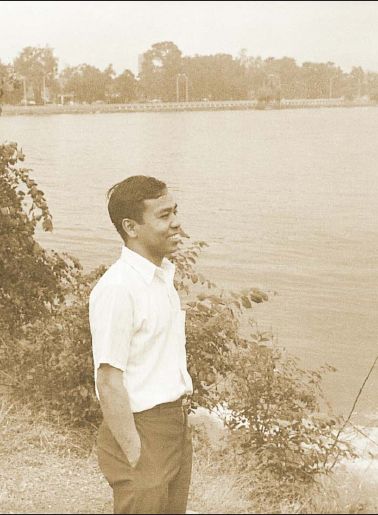
The war eventually came to an end, and shortly thereafter, by the will of Providence, Damodara was separated from his mother and two sisters and went to live with an uncle. His uncle was very poor and struggling to pay even the medical expenses of his daughter who was seriously ill. Although only a child, young Damodara could see his uncle’s helpless economic situation and not wanting to be a burden on anyone Damodara insisted that he be allowed to live alone. His uncle was reluctant, yet due to his financial condition he was obliged to consent.
At the age of twelve, Damodara was living on his own, depending on the income from the cultivation of the paddy field left to him by his father. Working in the fields to maitan himself, Damodara could not find the time to devote to his studies. Young Damodara faced all these difficulties with great courage and determination. He was never heard to complain about anything.
A couple of years later, by the loving effort of Sri Yadav Singh, Damodara’s primary school teacher, arrangements were made for Damodara to be taken care of by a distant uncle, Sri Kerani Singh. Sri Kerani Singh was a colleague of Sri Yadav Singh and he showed Damodara much affection and took care of his every need. At that time, being fully provided for, Damodara was able to resume his studies. His teachers found him to be a bright, diligent, sincere, humble and dedicated student. They all loved him dearly.
When Damodara was fourteen years old he became seriously ill with typhoid. The village physicians unanimously announced that Damodara would soon die. However, by the mercy of Sri Krishna, under the care of his uncle and a naturopathic doctor from the city of Imphal, Damodara, after fasting for forty days and drinking only whey, miraculously recovered.
From his early childhood Damodara was very attracted to hearing the pastimes of the Lord. On one occasion he spent the entire night watching the Divine Rasa Lila dance and consequently missed his final examination of 5th standard mathematics, whichtook place the following day. He would also regularly participate in the Deity worship of Sri Sri Radha-Krishna, Sri Sri GauraNitai and Sri Sri Jagannatha, Baladeva and Subhadra Who were installed in his village’s local temple.
Being a diligent student, in 1957, Damodara passed his matriculation exam in the first division. Damodara then started college at D. M. College, one of the most prestigious colleges in Imphal, Manipur. He obtained his senior secondary education in 1959, and graduated with First Class Honors in Chemistry in 1961.
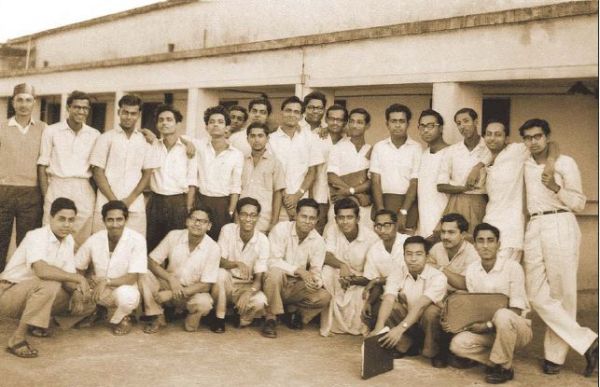
He later acquired his Bachelor’s of Science degree in Chemical Engineering and Chemical Technology in 1963 and further obtained his Master of Technology degree in Pharmaceutical Science from Calcutta University in 1964. Shortly thereafter, Damodara was awarded an overseas scholarship from the Ministry of Education, Government of India, to further his studies in the United States.
A Momentous Meeting with Srila Prabhupada
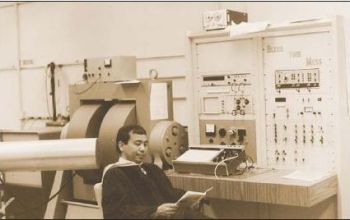
In 1969, Damodara was a student at the University of California, Irvine, doing his Ph.D. research in Physical Organic Chemistry. One day, the secretary of the chemistry department handed a telegram from India to Damodara informing him that his mother had passed away. He had not seen her for more than four years and was unaware that his mother was suffering from any ill health, so the news was unexpected. He wanted to return to India in order to perform her shraddha or funeral ceremony, but he had no money for his flight to India. However, he managed to borrow some funds from the University and made arrangements to leave for India. Just before leaving, he received a letter from his uncle, Sri Kerani Singh, advising him not to return to India for the shraddha ceremony. His uncle wrote, “Being a Vaishnava, you should lament neither for the living nor for the dead.” His uncle reminded Damodara that the body is temporary but the soul is eternal. Sooner or later there will be a time for everyone to leave this temporary body, as stated in the Bhagavad-gita.
He instructed Damodara not to waste any time worrying about the temporary body, but to concentrate on his studies and return to India after graduation and that he would arrange for the shraddha ceremony. So, Damodara cancelled his ticket to India but at the same time began to lose interest in his studies. He spent thesucceeding nights meditating on the flickering nature of this material world. In life, incidents that act as a catalyst for introspection and inquiry about the purpose of life happen to individuals by the inconceivable mercy of the Supreme Lord. In this regard Srila Prabhupada states, it is a special reasoning power to inquire "Why am I suffering?" This is special reasoning. Bhagavad-gita says, out of many thousands, someone may develop this reasoning power. When there is some impetus to awaken this reasoning power, it is called brahma jijnasa.” This is confirmed in the first verse of the Vedanta Sutra, which asserts that this human form of life is meant for asking the questions of what is the Absolute Truth and how to solve the problems of suffering.
Hearing the sad news of his mother’s passing, Damodara’s friend, Dr.RavindraPratapRao, came to see him. Dr.Rao suggested that they go for a drive. They drove along the Pacific Coast Highway to Laguna Beach and upon arrival began to take a walk. While walking along the coast they saw some ISKCON devotees chanting HarinamSankirtan. Out of curiosity, they followed the devotees to find out their destination. One of the devotees noticed them following the Sankirtan party and stopped to invite Damodara and Dr.Rao to the local ISKCON temple in Laguna Canyon. The devotee explained to them that everyday they were performing chanting of Lord Krishna’s Holy Names and partaking in delicious sanctified food offered to Lord Krishna. He asked them to visit the temple and join them in the singing, dancing and feasting programs.
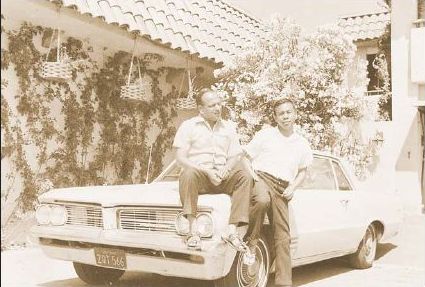
The following day, Dr.Rao went to the temple alone and on his return reported to Damodara that the devotees were wonderful and everything in the temple was pleasant. Everyday Dr.Rao urged Damodara to accompany him to the temple. Damodara, citing his academic pressure, declined each time. One day Dr.Rao told him that he had learned that Srila Prabhupada, the founder of ISKCON, was staying in Los Angeles and he said, “Let us go and see Srila Prabhupada in Los Angeles tomorrow.” However, Damodara refused, saying that he was extremely busy in his academic work and could not go with him. Nevertheless, Damodara encouraged Dr.Raoand requested him to report about the visit. Dr.Rao drove to Los Angeles and when he reached the temple, because he was a stranger, he was not allowed to see Srila Prabhupada. Dr.Rao told Damodara, “I was extremely disappointed.
I decided to wait in my car andpray to Lord Sri Krishna. A little later, a devotee came and informed me that Prabhupada wanted to see me. I felt my prayer to Lord Sri Krishna had been heard and immediately went to Srila Prabhupada’s room. When Prabhupada saw me, he said, ‘You have been sent by Lord Krishna. I have been praying to Lord Krishna to send me at least one Indian boy to help me in my mission. Krishna has sent you to me.’” Dr.Rao then again requested Damodara, “Let us go tomorrow to see Srila Prabhupada”. Damodara again declined. This incident recurred for a few days Dr.Rao would go and meet Srila Prabhupada and on returning would request Damodara to join him the following day. Damodara would refuse to go and see Srila Prabhupada on the plea that he was busy with his studies. Finally, one day, Dr.Raopresented Damodara with an ultimatum, saying, “If you do not accompany me tomorrow morning to see Srila Prabhupada I will never come and see you again in this lifetime. Our friendship will be finished forever.”
Damodara was surprised at his friend’s seriousness. He did not have a good opinion of the Indian Swamijis in the USA having heard of some of their activities. He wrongly thought that Srila Prabhupada would also be like them. However, out of friendship he decided to accompany Dr.Rao the next day. Something similar to this took place before Srila Prabhupada's first meeting with Srila Bhaktisiddhanta Saraswati Thakur.
Srila Prabhupada later recounted the event, in 1922 I met my Guru Maharaja through the insistence of my intimate friend, Mr.Narendranath Mullick. I did not wish to go, but my friend forced me. He told me, ‘There is a nice sadhu. Let us go and see him.’ I did not like these sadhus in those days due to my national spirit. So I said, ‘I have seen many sadhus. They used to come to my father’s house. I was not very pleased with their behavior.’ But my friend dragged me forcibly saying: ‘No, I have heard this person speak and he is very exalted.’ So I went.” (Srila PrabhupadaLilamrita).
brahmand bhramite kona bhagyavan jiva guru krsna prasade paya bhakti lata-bija
"According to their karma, all living entities are wandering throughout the entire universe. Some of them are being elevated to the upper planetary systems, and some are going down into the lower planetary systems. Out of many millions of wandering living entities, one who is very fortunate gets an opportunity to associate with a bona fide spiritual master by the grace of Krishna. By the mercy of both Krishna and the spiritual master, such a person receives the seed of the creeper of devotional service." (ChaitanyaCharitamrita, Madhya 19.151)
In this regard, Srila Prabhupada mentions in his purport of the SrimadBhagavatam, verse 2.2.30, “A sincere soul is helped by the Lord through meeting a bona-fide spiritual master, the representative of the Lord. By the instruction of such a spiritual master, one gets the seed of bhakti-yoga.” This meeting of the prospective disciple and spiritual master is not an ordinary encounter. It is by the divine arrangement of the Supreme Lord.
That night Dr.Rao slept in Damodara’s apartment. Both of them woke up at 4:00 A.M., took their baths and drove to the Los Angeles temple. On the way, Dr.Rao revealed that he was going to be initiated that morning by Srila Prabhupada. Damodara surprised by the sudden change in his friend’s life asked, “Will you shave your head? Will you wear a saffron dhoti in the lab?" Dr.Rao replied, "It would be my pleasure". Damodara was struck by his friend's determination, enthusiasm and sincerity. He said, "I admire your great courage. You must be blessed by Srila Prabhupada."They reached the temple in Culver City. Srila Prabhupada was just leaving for his morning walk. He returned from his morning walk after about an hour. He took darshan of the Deities and sat on the Vyasasana. Damodara was standing near the Deities, facing Srila Prabhupada, exactly opposite the Vyasasana.
Damodara and Srila Prabhupada looked intently at each other's eyes for a few moments. Srila Prabhupada started singing sri krishna caitanya prabhu nityananda sri advaita gadadhara srivasadi gaura bhakta vrinda. Damodara's mind was captivated by Srila Prabhupada's sweet, melodious and intense devotional singing. Immediately after the song, the initiation ceremony commenced. Dr.Rao was initiated and was given the spiritual name, Ramananda Ray Dasa. Srila Prabhupada went to his room after the ceremony.
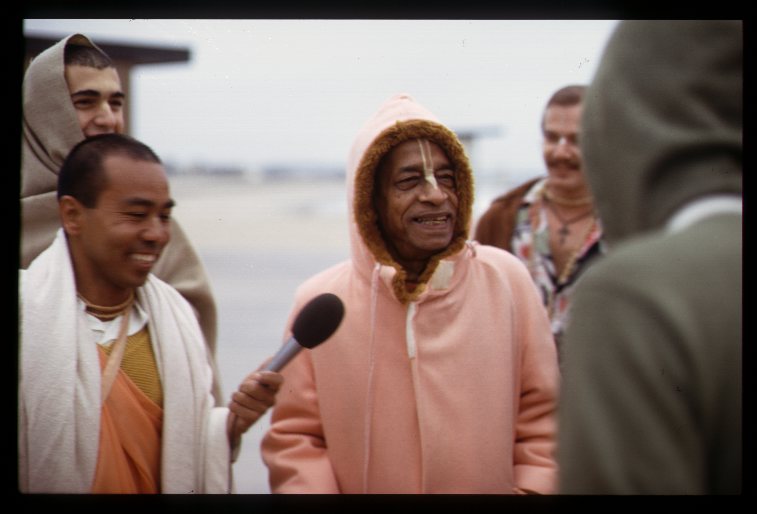 Ramananda Ray said to Damodara, "Let us go upstairs to Srila Prabhupada's room and see him." At this time, Damodara became both eager and enthusiastic to see Srila Prabhupada. Ramananda Ray had carte blanche for entering Srila Prabhupada's room. Srila Prabhupada had given the instruction that whenever Ramananda Ray came, he could come to his room. After entering Srila Prabhupada's room they both sat before him. Ramananda Ray introduced Damodara to Srila Prabhupada informing him that Damodara was from Manipur and was currently working on his Ph.D. in Chemistry at the University of California, Irvine. Srila Prabhupada was extremely happy and remarked, "Manipuri people are descendents of Babhruvahana, the son of Arjuna. They have been Vaishnavas since the time of the Pandava's and Manipuri kings have established Sri Krishna temples in Vrindavan, Radhakund, Nabadvip, etc." Srila Prabhupada appreciated the Vaishnava culture of Manipur, especially its devotional music and dance based on Sri Krishna's pastimes. Srila Prabhupada then asked Damodara, "Being born in a Vaishnava family, why did you come here, crossing the ocean?"Srila Prabhupada added, "You, young scholars and students, have come here to the U.S.A. as beggars to beg scientific knowledge and dollars. But I have not come here to beg. I have come here to give the Americans something very valuable, which they do not have Bhagavata Culture. Why don't you do the same as I am doing? Why are you simply taking?
Ramananda Ray said to Damodara, "Let us go upstairs to Srila Prabhupada's room and see him." At this time, Damodara became both eager and enthusiastic to see Srila Prabhupada. Ramananda Ray had carte blanche for entering Srila Prabhupada's room. Srila Prabhupada had given the instruction that whenever Ramananda Ray came, he could come to his room. After entering Srila Prabhupada's room they both sat before him. Ramananda Ray introduced Damodara to Srila Prabhupada informing him that Damodara was from Manipur and was currently working on his Ph.D. in Chemistry at the University of California, Irvine. Srila Prabhupada was extremely happy and remarked, "Manipuri people are descendents of Babhruvahana, the son of Arjuna. They have been Vaishnavas since the time of the Pandava's and Manipuri kings have established Sri Krishna temples in Vrindavan, Radhakund, Nabadvip, etc." Srila Prabhupada appreciated the Vaishnava culture of Manipur, especially its devotional music and dance based on Sri Krishna's pastimes. Srila Prabhupada then asked Damodara, "Being born in a Vaishnava family, why did you come here, crossing the ocean?"Srila Prabhupada added, "You, young scholars and students, have come here to the U.S.A. as beggars to beg scientific knowledge and dollars. But I have not come here to beg. I have come here to give the Americans something very valuable, which they do not have Bhagavata Culture. Why don't you do the same as I am doing? Why are you simply taking?
Why don't you also give something?" This statement by Srila Prabhupada to Damodara, at their very first meeting, affected him greatly and is similar in nature to the statement made by Srila Bhaktisiddhanta Saraswati Thakur to Srila Prabhupada upon their first meeting the instruction to present Bhagavata Culture to the Western countries.
After that momentous meeting Damodara started visiting Srila Prabhupada in Los Angeles almost every day and after a short period of time he received spiritual initiation. At the time of initiation, Srila Prabhupada gave him the spiritual name, Svarupa Damodara Dasa. Later, after taking sannyasa initiation the prefix Bhakti was added and since that time he has been known as Sripada Bhaktisvarupa Damodara Maharaja.
The ISKCON Los Angeles temple is known as New Dwarka and it served as Srila Prabhupada's headquarters in the 1970s. While visiting Srila Prabhupada in Los Angeles, Maharaja began to ask him questions on subjects such as 'What is the nature of this material world? What is the nature of life? What is the Absolute Truth?' Whenever a sincere spiritual aspirant of the Absolute Truth meets a genuine spiritual master, this type of inquiry is natural. SrimadBhagavatam recounts the story of Vidura meeting his spiritual master, Maitreya Muni, where Vidura similarly inquired from Maitreya Muni about the nature of life and the universe. Srila Prabhupada elaborates on this in his purport of the Bhagavad-gita verse 7. 3, where he says, "There are various grades of men, and out of many thousands, one may be sufficiently interested in transcendental realization to try to know what is the self, what is the body, and what is the Absolute Truth."
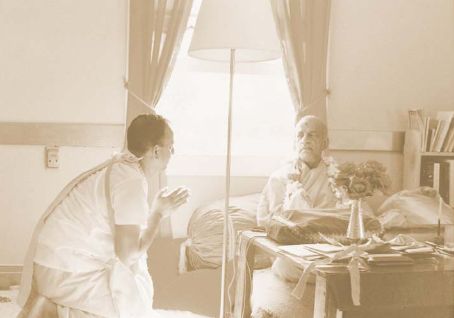 Shortly after his initiation, Sriman Ramananda Ray Dasa moved to Gorakhpur, India and opened an ISKCON center. Unfortunately he left this world in 1976. Maharaja is eternally grateful to SrimanRamananda Ray Prabhu for his spiritual friendship and for having introduced him to Srila Prabhupada.
Shortly after his initiation, Sriman Ramananda Ray Dasa moved to Gorakhpur, India and opened an ISKCON center. Unfortunately he left this world in 1976. Maharaja is eternally grateful to SrimanRamananda Ray Prabhu for his spiritual friendship and for having introduced him to Srila Prabhupada.
After completing his Ph.D., in July 1974, Maharaja went to Vrindavan, India to see Srila Prabhupada. In Vrindavan, Srila Prabhupada and Maharaja would take a walk every morning. During those walks Srila Prabhupada would speak to Maharaja about presenting the science and philosophy of Krishna consciousness to the world’s intellectuals. One day after a morning walk, Srila Prabhupada called Maharaja to his room and expressed his desire to start an academic wing of ISKCON. He asked Maharaja to become the director of that academic wing, to which Maharaja humbly replied, “Srila Prabhupada, I have neither the experience nor the knowledge of how to run such an institute.
I am completely unqualified.” However, Srila Prabhupada responded by saying, “I will give you all of the instructions required to run the Institute. You simply follow them.” Over the following months Srila Prabhupada and Maharaja worked on the details of forming the Institute. Maharaja suggested the name, “Bhaktivedanta Institute” and Srila Prabhupada agreed to it. Maharaja showed Srila Prabhupada the logo of the Bhaktivedanta Institute that he had designed. Srila Prabhupada liked it very much and instructed Maharaja to add the words athato brahma jijnasa, the first verse of the Vedanta Sutra, to the top of the logo. In 1975, Srila Prabhupada visited Atlanta on Maharaja’s request and gave extensive instructions to Maharaja and his colleagues about the purpose and functions of the Bhaktivedanta Institute. It was at that time that the Bhaktivedanta Institute was officially registered. In 1976, Srila Prabhupada also appointed Maharaja as ‘ISKCON Minister for Higher Education’.
Srila Prabhupada proceeded to give Maharaja many specific instructions through conversations and letters on how to organize and operate the Institute. Some of these instructions were of a private nature and some of them were not. He sometimes used strong words like ‘fools’ and ‘rascals’to emphasize the urgent need to save humanity from the materialistic concepts of life propounded by most contemporary scientists. However, he repeatedly stressed that all of the activities of the Institute should be carried out with great skill and politeness and that those engaged in this work should be exemplary in their dealings with scholars. A Vaishnava is very compassionate, as are his activities. Therefore the task set forth by Srila Prabhupada of introducing the Bhagavata Paradigm to the scientists was to be done with the utmost respect for their free will. In this regard, Srila Prabhupada frequently emphasized the need for the world’s scientists, intellectuals and leaders to bring a God centered approach to their research and activities. He felt that if they would do this it would create an immense benefit for the entire society. This understanding given by Srila Prabhupada is emphasized in Bhagavad-gita, verse 3.21:
yad yad acarati sresthas tat tad evetaro janah sa yat pramanam kurute lokas tad anuvartate
“Whatever action a great man performs, common men follow. And whatever standards he sets by exemplary acts, all the world pursues.”
Maharaja was able to lay the foundation of the Bhaktivedanta Institute under Srila Prabhupada’s guidance. He organized a conference in Vrindavan, India, produced literature and delivered lectures at various institutions. During the initial period of the Institute, Maharaja was working as a research scientist at Emory University and therefore most of the Institute’s major activities were done after Srila Prabhupada’s departure from this world. After Srila Prabhupada’s departure, Maharaja underwent a long struggle to establish the Bhaktivedanta Institute’s activities. This was primarily due to a lack of financial support. Srila Prabhupada had instructed Maharaja to establish a Bhaktivedanta Institute center in America. For this purpose, in 1978 Maharaja temporarily rented a house in Atlanta. A little while after this, he shifted the Institute to Philadelphia. There he and the other members produced the bulletin for the Bhaktivedanta Institute. Soon after that the funds required to run the Institute were exhausted and so Maharaja moved to Oklahoma City were he oversaw the running of a motel with the help of Sri Ramanbhai Patel in order to generate funds for the Institute. With the meager income from the motel he began to work on some publications.
Later, Atreya Rishi Prabhu, who knew Maharaja from prior interactions that the two of them had in the company of Srila Prabhupada, requested Maharaja to move the Bhaktivedanta Institute to San Francisco. Atreya Rishi Prabhu owned a few houses there and out of friendship offered Maharaja the use of one of them.
Maharaja inaugurating the Bhaktivedanta Institute Branch in Tirupati, India
In the early 1980’s Maharaja began to give presentations on Bhagavata Culture at various universities in South India. The TirupatiTirumalaDevasthanam (TTD), management of the famous Balaji Temple, after being impressed by Srila Prabhupada’s mission, donated a piece of land for the Bhaktivedanta Institute at the base of the Tirumala hill. Thereafter, Maharaja opened a Bhaktivedanta Institute branch in Tirupati, which is now the ISKCON Tirupati temple. Thus in India, the Bhaktivedanta Institute was started in Tirupati with the aim of presenting the scientific, theological and philosophical teachings of the Bhagavada-gita and SrimadBhagavatam for the welfare of humanity, by the combined effort of TTD and ISKCON. Simultaneously, he began organizing a conference on the Synthesis of Science and Religion that was to be held in commemoration of Sri Chaitanya’s 500th birth anniversary.
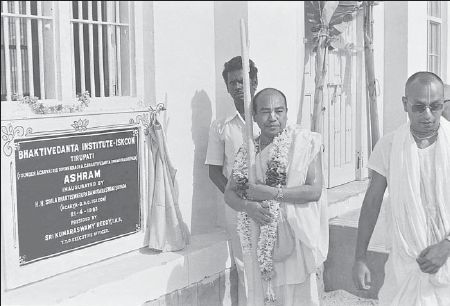
In spite of the financial obstacles that Maharaja faced in establishing The Bhaktivedanta Institute, it is now a well recognized research and educational institution. Maharaja’s acceptance of his spiritual master’s instructions as his life and soul has caused Srila Prabhupada’s vision of introducing the Bhagavata Paradigm to the world’s scientists, intellectuals and leaders to become a reality.
In the name of the Bhaktivedanta Institute, Maharaja organized three major conferences and a large number of seminars. He published two important books on the synthesis of science and religion and numerous other literatures, which have all received wide acceptance from the academic community all over the world. As director of The Bhaktivedanta Institute he interacted with thousands of scholars from around the globe, including many Nobel Laureates and leading scientists.
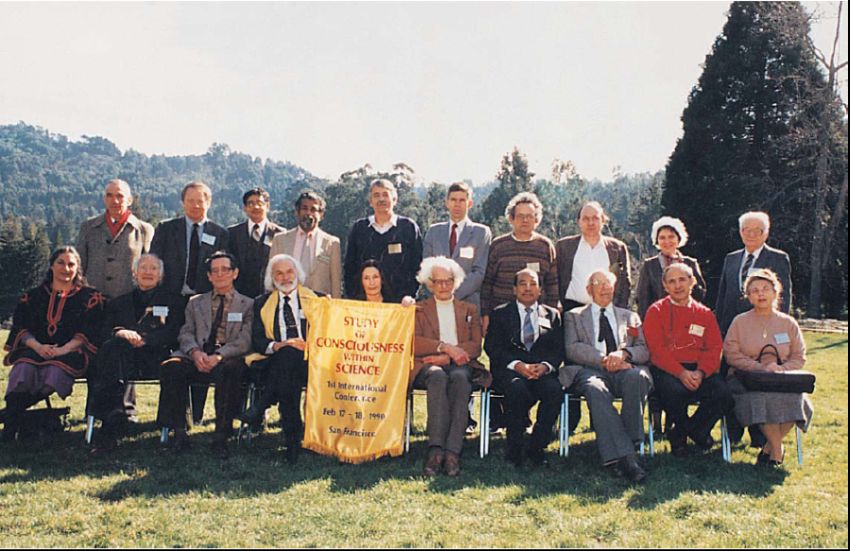
In Northeastern India, Maharaja started a network of schools in order to promote the goals of the Institute. Over 4000 students attend these schools and receive a scientific education centered on the spiritual values of the Bhagavata tradition.
Maharaja always expressed his gratitude towards those who helped him in the development of the Bhaktivedanta Institute. Because of their dedicated help, he could execute the instructions of his spiritual master for the eternal wellfare of the world.
Entering The Divine Abode
Srila Bhaktivinod Thakur, a revolutionary Vaishnava saint has written in his one poem glorifying Srila Haridas Thakur, a pure assosiate of Lord Sri Chaitanya Mahaprabhu –
“He reasons ill who says that Vaisnavas die,
When thou art living still in sound!
The Vaisnavas die to live, and living try,
To spread the holy name around.”
A devotee of the Lord offers his every breath in the service of The Lord. He completely dedicates his life for serving the humanity. His Holiness Bhakti Swarup Damodar Swami also set an example of a pure Vaishnava saint endowed with all divine qualities. His personality was an emblem of surrender. His life was completely dedicated in executing the order of His Spiritual master, His Divine Grace A.C. Bhaktivedant Swami Prabhupada despite of all oppiositions and reverses. As stated in Narada Bhakti Sutra, "sa tarati sa tarati lokam tarayati", A pure devotee delivers the whole world by his spiritual potency. the impact of Maharaj's efforts can be seen by rapid acceptance of his proposed concepts of synthesis of Science & Spirituality through out the world by many renowned Scientists as well as Noble Laureates.
Constantly preaching the glories of the Supreme Personality of Godhead, Sri Krishna, he entered the divine abode of The Lord on 02-oct-2006 on the most auspicious day of Vijay Dasami. He was given Samadhi in Sri Gopalji Mandir at Sri Radha Kund, Vrindavan, which is described in the scriptures as the topmost spiritual place within the three worlds. He is still present in his divine teachings in form of sound and literature. By connecting oneself with his books and lectures, one can still associate with him and get directions.